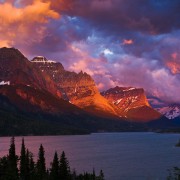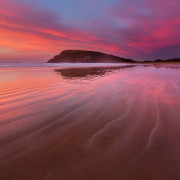What Camera Modes should Beginners use for Nature Photography?
When you’re first starting out in nature photography, understanding the many adjustments and settings associated with your camera is paramount. At the same time, this initial learning curve can be rather intimidating. Of all the camera features to understand, arguably the most important to grasp are the different camera modes that are available. The four primary camera modes are Automatic, Aperture Priority, Shutter Priority, and Manual.
Fully Automatic mode is more than likely where you’ll feel most comfortable when you’re first starting out, but you’ll want to transition out of this mode as quickly as possible. The longer you spend shooting in full automatic mode, the more difficult it will be to progress to other shooting options. Once you decide to make the leap and venture outside of Automatic mode, where do you go from there? First, you’ll want to understand how each mode operates and become comfortable with when to use mode.
Photography Exposure Triangle
Before we dive into the individual shooting modes, lets first recap the inner workings of the Exposure Triangle. The three sides of the exposure triangle represent Aperture, Shutter Speed, and ISO. These are the three components that determine the overall exposure of an image.
- Aperture: Aperture measures the opening of the lens (f-stop) that ultimately determines the amount of light that is allowed to pass through the lens to your camera’s sensor. The higher the f-number (f-stop), the smaller the opening and the lower the f-number the larger the opening.
- Shutter Speed: Shutter speed measures the amount of time the shutter remains open allowing light to pass through to your camera’s sensor. A slower shutter speed results in more light passing through and a faster shutter speed results in less light.
- ISO: ISO allows you to brighten or darken an image and determines how “sensitive” your camera is to the available light in your scene. The higher the ISO, the brighter your image and the lower the ISO, the darker your image.
Automatic Shooting Modes
Fully Automatic Mode
As the name suggests, this mode is fully automatic. The camera adjusts all settings that it deems necessary to create a properly exposed image. This is a good place to start for a beginner photographer, but you don’t want to spend a great deal of time in this mode. Your goal should be to upgrade from Automatic mode as soon as possible into one of the creative shooting modes such as Aperture, Priority, or Shutter Priority.
Programmed Auto Mode or P Mode
Program mode is a great first step away from relying solely on fully automatic mode for your photography. In Program mode your camera will handle the exposure for you from both a shutter speed and aperture perspective, but you’ll have some control over your camera’s exposure at your disposal. This includes ISO Settings and Exposure Compensation – these will be the settings that will be at your discretion to make changes to. This is a natural progression for beginner nature photographers to step away from camera’s automatic mode and a great way to begin testing the waters so to speak towards using a more camera’s manual mode.
Priority Modes
Aperture Priority Shooting Mode
Aperture Priority is probably the most popular camera mode for photographers. This mode is easy to understand and very functional yet still allows for a great deal of creative flexibility. In this mode, you’ll set the aperture (f-number) along with the desired ISO level. Then, the camera determines the correct shutter speed given the amount of light in the scene. This mode is great for just about every genre of photography including nature photography. In this mode, you’re basically telling the camera that the aperture is the most important setting for what you’re photographing and you want to control that – that’s where the name Aperture Priority comes from.
Shutter Priority Shooting Mode
In this shooting mode, you’ll select the shutter speed and ISO and the camera will determine the best aperture to use in order to create a properly exposed image. I rarely use this camera mode for nature photography. However, it can be useful when photographing fast moving subjects for sport or wildlife photography. When photographing birds for example, having a fast shutter speed is critical in order to freeze the action of the birds in flight. This mode is great if you’re looking to show motion in moving water or passing clouds by utilizing a slower shutter speed. In this mode, you’re telling the camera that shutter speed is the most important setting for what you’re photographing and you want to control that – that’s where the name Shutter Priority comes from.
Another benefit of using both aperture priority and shutter priority mode is that you’ll also retain control over things like exposure compensation and exposure bracketing. So although your camera will retain control over either aperture or shutter speed depending on which mode you’re in, you’ll still have the ability to make certain changes in order to balance your overall exposure.
Manual Camera Mode
Manual is certainly the most intimidating of all camera modes at first. But once you use it a few times, you’ll realize that it’s much easier than you previously thought. In this mode, you have full control over your camera, which is a beautiful thing! You’ll set the aperture, shutter speed, and ISO level. This is my favorite go to camera mode for nature photography unless I find myself in a situation where my scene is unfolding quickly and I’m rushed. Manual mode provides you with the most creative possibilities and gives you ultimate control over every aspect of your image.
Perhaps one of the most important skills to understand when you begin using Manual Mode is how to decipher the information contained within your camera’s histogram and exposure meter. The exposure meter is probably an easier place to start as a “proper exposure” according to your camera’s metering system is when the indicator is on zero. Most exposure meters range from exposure values of -3 to +3 which makes it very easy to see if your image is 1 to 3 stops underexposed or 1 to 3 stops overexposed.
Histograms in photography is another way to determine a well exposed image as well. Perhaps the most important component of using histogram in photography is to determine if your nature photo is either over or under exposed. Proper use of histograms in photography and also tell if you need exposure bracketing to capture all the details in shadow and highlights in your photos. Before you can use your camera’s histogram display you will need to master how to read the histogram properly. Both the exposure meter and histograms in photography may seem intimidating at first, but with a bit of practice both will unleash an entirely new understanding of exposure.
Auto ISO Settings
Auto ISO is a setting or an adjustment and not a mode per se, but something that is found in many camera’s today. This camera setting is one that you can apply regardless of which shooting mode you’re in and give you the ability to set your camera’s minimum and maximum ISO levels along with minimum and maximum shutter speeds. However not all the cameras support auto ISO setting. It is best to check your camera manual to see if your camera supports auto ISO setting. Auto ISO isn’t a setting that I use often, but it can be useful in situations where lighting conditions are evolving quickly or when photographing wildlife.
I know this may seem like a great deal of information to digest but, in reality, the best approach to understanding the four primary camera modes is to get out and start testing each of them. This is the fastest way for you to take the next step towards mastering your camera’s shooting modes.















